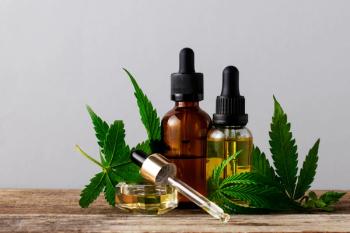
E-Separation Solutions
- E-Separation Solutions-07-07-2011
- Volume 0
- Issue 0
Jorgenson at ASMS on the Future of LC–MS
At the ASMS 2011 conference, Jim Jorgenson of the University of North Carolina shared his thoughts on current and potential future developments in LC that will affect the practice of LC?MS. Here are his views on particle size, superficially porous particles, monoliths, open-tubular columns, and questions of pressure and temperature.
With the title “LC and MS: A Match Made in Heaven,” Jim Jorgenson’s tutorial talk on the opening day of the American Society for Mass Spectrometry (ASMS) 2011 conference (June 5–9, 2011, Denver, Colorado) was ostensibly about the combination of liquid chromatography (LC) and mass spectrometry (MS). In fact, Jorgenson, a professor of chemistry at the University of North Carolina, Chapel Hill, summed up his thoughts on pairing the methods in just a few sentences. “Mass spectrometry is the only way to detect!” he said. “LC combined with MS is better than either one alone.”
The real focus of the talk was current and potential future developments in LC that will affect the practice of LC–MS. Jorgenson discussed particle size and type (including fully and superficially porous particles, and particles that are not spherical), column types (including monoliths, nanocolumns, open-tubular, and microfluidic columns), as well as questions of pressure and temperature. His views and predictions on many of these developments are summarized below.
Particle Size
If you explore chromatographic theory, Jorgenson said, for any given pressure there’s an optimal particle diameter. For small molecules, for example, at a pressure of 300 bar, 1.8-µm particles in a 17-cm column seem optimal; at 1,000 bar, a 1.3-µm particle in a 23-cm column is the most efficient (Figure 1).
For large molecules, those ideal particle sizes are smaller, because of the change in the diffusion coefficient. “The theory would suggest that for proteins, should go to sub-micron particles,” Jorgenson said. “The problem is that it’s a nightmare trying to pack such tiny particles.”
Superficially Porous Particles
A key advantage of superficially porous particles, Jorgenson said, is that they are more uniform than fully porous particles. “Particle-size uniformity is important for good chromatography,” he said. Nevertheless, he would like to see them made smaller, perhaps as small as 1 µm. “We’ll be especially interested in superficially porous particles if the particles can be made smaller, with a very thin film,” he said.
Monoliths
“Monolithic columns are very exciting,” says Jorgenson, because they make it possible to uncouple the physical dimension of the silica framework from the dimensions of the channels between the silica. As a result, with monoliths one can achieve the efficiency of a 2–2.5 µm particle with the flow resistance of a 4.5-µm particle. But he would like to see that taken further.
“I don’t have any problem working with the pressures needed for 2.5-µm particles,” he said. “So I’d like to see monoliths achieve the efficiency of a 1-µm particle with the flow resistance of a 2-µm particle.”
Jorgenson’s concern with monoliths is that every column is a unique synthesis, both of the silica framework and the stationary phase bonding chemistry. “That may reduce the reproducibility and increase the cost,” he said, adding that monoliths also face the difficulty of having to compete with an entrenched technology. “For silica particles, the problems are already worked out; with monoliths, we will need to work them out all over again.”
Open-Tubular Columns
Open-tubular columns can now be paired with MS, which is a critical advance, because using laser-induced fluorescence for detection produced many unidentifiable peaks. “But we need smaller diameters where efficiencies will be much higher than with the current 10-µm sizes, and it will be a challenge,” Jorgenson said. “If we bring them down to 5 µm or 2 µm, I don’t know if the mass spectrometer will be able to handle it.”
High Temperatures
Using a high temperature lowers the viscosity of the mobile phase and increases the diffusivity of solvents, the main benefit of which is faster analysis, Jorgenson explained. “Everybody ought to try high temperatures, if only to increase the speed of the analysis,” he said.
The main concern with high temperatures, however, is solute stability, which is a function of both temperature and time. He then discussed the possibilities for various potential temperatures. “60 °C will probably work in many cases,” he said. “Normally it would scare me to go to 100 °C, but it will be sample-dependent. And 200 °C scares the heck out of me; I worry not only about compounds but about columns. But if your experiment is short enough, and your compound is stable enough, 200 °C may be okay,” he concluded.
The other point to understand about high temperatures, he said, is that they work best with capillaries, to ensure that the heat transfers quickly and evenly into the center of the column.
High Pressures
“Pressures as high as 25,000 to 50,000 psi seem realistic, but 100,000 looks too difficult, particularly for the hardware,” Jorgenson said. “You need to ask yourself if going that high is worth it.”
Microfluidic Devices
Microfluidic devices show promise, but the chips need to be better, and more equipment needs to be integrated onto the chip, he said. These systems may be better suited for capillary electrophoresis than for LC, he concluded.
Summary
In summary, Jorgenson said, smaller particles and smaller columns will continue to generate better separations, and better separations will mean sharper peaks and faster MS. “But smaller columns lead to lower flow rates,” he said. “Will we have ultrananospray MS? Smaller columns mean less sample and will push MS to the wall.”
ASMS conference attendees can watch a video of Jorgenson’s lecture at ASMS.org.
Articles in this issue
over 14 years ago
Where is LC-MS Heading?Newsletter
Join the global community of analytical scientists who trust LCGC for insights on the latest techniques, trends, and expert solutions in chromatography.




